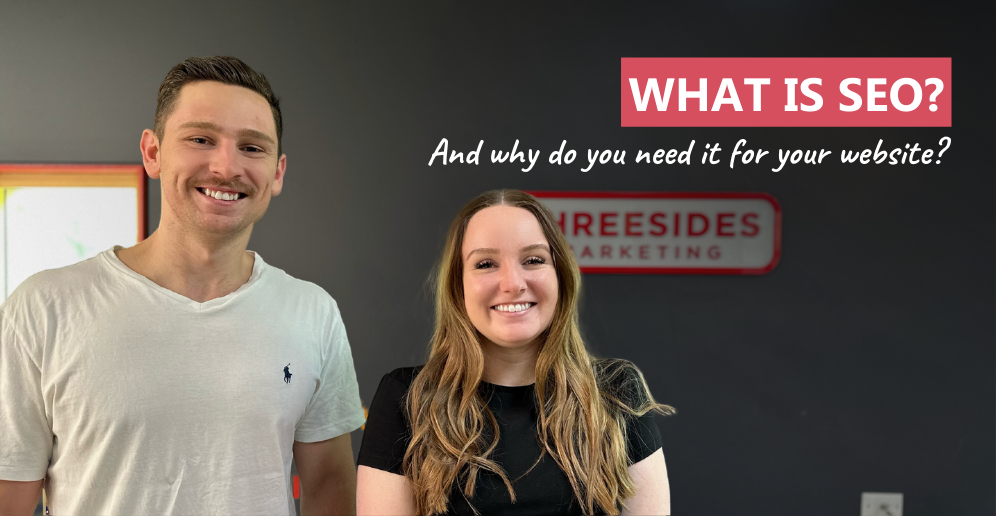When you take your business online, you open the window of opportunity for reaching an audience wider than ever before. But websites are not just a set-and-forget tool if you want consistent results that continue to convert paying customers. Setting up your website is the first step to putting your business on the map and there are a few more steps to ensure your website is performing the best it possibly can.
Consider this analogy: your website is like a car. It will need maintenance and servicing routinely to make it perform at its best. If you use 91 unleaded in your car, it will do the job but if you pop in 98 supreme unleaded, your car’s performance, efficiency and longevity increase. Good SEO is like that 98 supreme unleaded. Alright, enough about cars. Let’s get into what SEO is and why it’s necessary for your website’s success.
What is SEO?
SEO stands for search engine optimisation. It’s the process of helping your web pages rank higher on search engines such as Google and Bing.
Every time you search Google, the search engine ranks data collected from web pages that are relevant to your search query, and categorises and optimises the best result for your experience. SEO is a niche area of digital marketing and it takes a lot of research, trial and error, and experience to get right.
Why do you need SEO?
When you use SEO for your web pages, your overall website ranking can appear higher up the Google search list without the use of Google Ads. The difference between Google Ads and SEO is that one is paid ranking (ads) and the other is earned through Google’s understanding of the search engine landscape (SEO). When SEO is done well, your web pages will have more visibility and potential engagement of your product and services with your target audience.
It’s just keywords, right?
You might have surmised that SEO is useful for visibility in matching keywords, categories and topics. But there is more to it than just the words on your page. This includes:
- Keywords (words people use to search on Google or Bing)
- Good quality written content that is original, engaging, informative and valuable for the intended audience
- Images with alt text
- Internal and external links (links to other pages on your website and links to web pages from external websites)
- Backlinks from high-ranking websites (when a well-known website links your website to theirs)
Beyond what you can see
While SEO is quite a hefty topic to cover in just one article, there are small wins with technical SEO that don’t require content writing.
Site structure
SEO comes into play with website design too. It needs to have a functional purpose that can tell the search engine the best way to crawl (read) the data. You can do this by updating your site structure with the correct heading tags in a sequential manner. This refers to the heading tags specifically. Titles of webpages should use Heading 1 tags and sizing where all other subheadings should be Heading 2, then Heading 3 and so on. By ensuring you stick to this format, you are telling search engines to review your pages, and content, in the order you would like it to trail through.
The old copy-and-paste trick does the job for many things, but it’s something to be mindful of when you’re duplicating entire pages. Areas you should look out for when duplicating pages are the metadata and meta tags. When these don’t get updated, you are sharing the wrong information with search engines about the page. You can duplicate pages if you find it easier, but always ensure you have reviewed not only the copy but the metadata and meta tags too.
Images and videos
We all get annoyed when a website loads slowly. While it might be your internet connection, it may be that the images and videos on your website could be contributing to a slow site speed. This can contribute to your ranking on search engines. A simple fix is to review your file sizes and types and make adjustments without sacrificing the quality.
Mobile friendly design
Just another moving part of SEO is making sure that your website is accessible on all types of devices. This is called responsive web design, and it’s when your website adapts to invisible grids that are based on pixels for your device. This ensures that each element on your website does not lose its information across any device a person is viewing from.
Take your website to the next level with SEO
There are many SEO tools to help you source search terms, however, they can be overwhelming if you’ve never delved into the world of SEO. If you’re looking to put your business ahead of the game and rank higher in search results, reach out to our experienced team.
This article was written using SEO tools and tricks of the trade.






